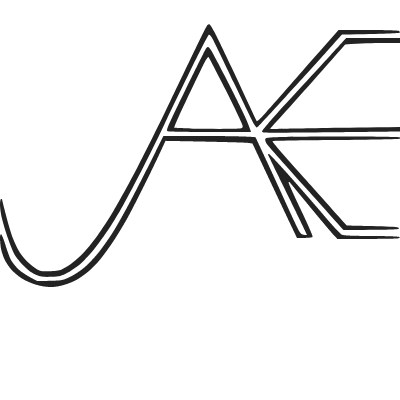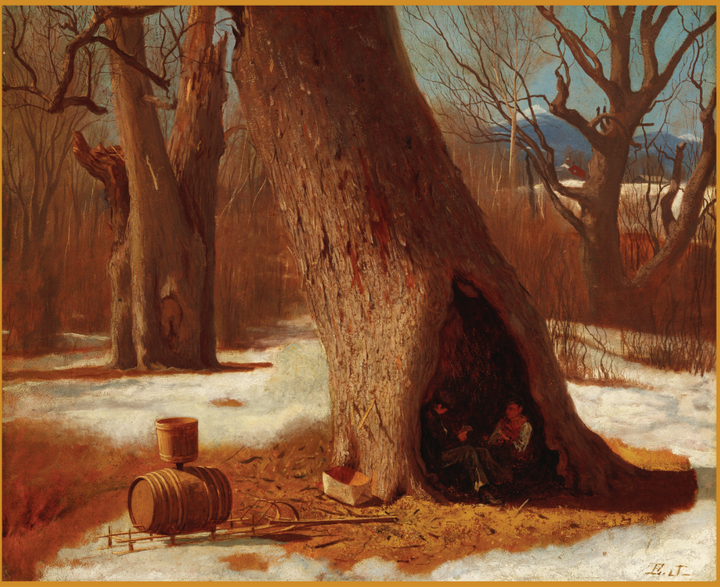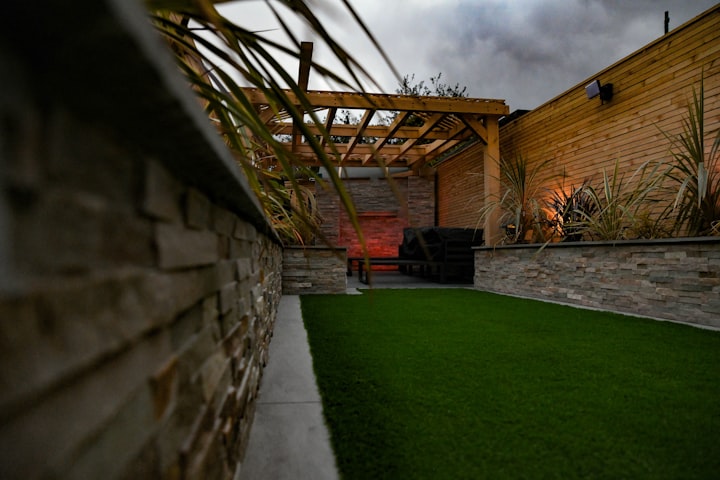Running Against the Wind: Disabled Masculinity and the Vicious Cycle of Sport
I’ve been looking at myself in the mirror above the sink.

I stand looking at myself in the mirror.
I wear black Nike running tights. Nike isn’t my brand but these are a favorite pair. I own three pairs and one can tell which are the favorites: the back pocket of the Nikes doesn’t zip anymore; I’ve picked at the embossed logo on a pair of North Faces; the Sugois look new, they’re taller in the back than they are in the front and are always slipping down which, on some level, makes me feel insecure about my waist size so I avoid them.
I’m shirtless. And I’m looking at myself. Not like Narcissus gazed at himself but rather doubtfully, critically.
Most defined are my pectorals and my abs taper pleasingly towards my navel. But other than that my chest isn’t much to speak, or write of. And I dislike how my gut doesn’t sit flat, or flat as I would like.
I suck in my stomach—it’s a pressure that begins in my ass and shoots up my lower back, revealing the six slightly toned partitions of my abdomen that, since eighth grade, I’ve been manifesting with progressively more compulsive sit-ups.
When Liriope gave birth to Narcissus she asked Tiresias, the blind prophet if her son “would live to see a ripe old age” (The Metamorphoses 52). “‘Yes,’ [Tiresias] replied, ‘so long as he never knows,” that is sees “himself’” (Metamorphoses 109). If I’d never been taught to look at myself and assign value based on what I saw I’d be living a happier life. But when Leslie gave birth to me there weren’t any blind elders to be found; there was no one to caution me against the shortcomings and harms of an ocularcentric and ocularly obsessed world.
As I write Word underlines “ocularcentric” and again: “That word, that concept doesn’t exist,” it tells me; “That’s just the way it is,” the societal subtext reads.
I’ve been looking at myself in the mirror above the sink. I walk back to my room.
Above the dresser hang five medals: three age division, a first and second place overall. Lest the nondisabled amongst you wish to be, as disability and literature scholar G. Thomas Couser writes in “Signifying Selves: Disability and Life Writing,” “reassure[d]” by a discursive narrative of overcoming—to have your “fear of disability … assuaged, at least temporarily, by a best-case scenario”—this isn’t that type of narrative (this narrative doesn’t document a “narrator manag[ing] to achieve something thought … impossible for a person with a particular condition,” id est the blind man with hypotonia learning to run); I’ve always been a fine runner, but ableism has rendered my relationship to running fraught (204).
I open the drawer at the bottom of the dresser and thumb through running shirts; it’s early November, too cold to wear a singlet or short sleeve and there are many of those: two from RunBelfast’s Bug Run 5Ks, I seldom wear either, one makes my nipples bleed, the other one’s huge and makes me feel like a twig; another from their 2022 Kilted Canter 5K; and one from the Malta 10K I ran earlier this fall. There are three light shell layers, too cold to wear one of those. I pick out a heavier tech long sleeve, green, from the bottom of the stack, I unfold it and put it over my head, I slide in my left arm and then my right. Each sleeve has a thumbhole and after I put gloves on, I pop my left thumb through its thumbhole. I don’t pop my right thumb through its because on my right wrist I wear my Forerunner and if I cover it with my sleeve I won’t be able to check distance, pace, heart rate, total calories et cetera. I loop my OpenRuns over my ears.
The Skidmore College logo rests on my left breast, over my heart, like some fraud student-athlete. The Nike Swoosh rests on my right. Again Nike isn’t my brand.
The neon yellow ASICS (GEL-CUMULUS 24s) that rest by my feet are. A runner of nearly 40 years, my father wears their GEL-KAYANOs. When I resolved to take up running some five years ago now and my mother took me to Marathon Sports—not my father, I think he resented at first that I’d taken up his torch but as he’s started running again (he broke his ribs in 2012 and subsequently took eight years off from the sport) we’ve begun to bond over it—I was happy to be placed in a pair of ASICS like I was carrying on some sort of father-son legacy.
The nape of the neck seam on one of my favorite ASICS racing singlets reads “Sound Mind, Sound Body.” This seems backward and concurrently makes sense to me. Some days, running mollifies my anxiety. And other days, it makes me feel more secure in my virility and the solidity of my body, the miles and calories burned do; running takes the edge off my body dysmorphia. Regardless a “sound” body precedes quietness of mind. “Sound Mind, Sound Body” seems to be operating on an exteriorizing rationale (i.e. minds exist within bodies); indeed ASICS—I find looking all this up—is an acronym for the Latin Anima Sana in Corpore Sano or “a sound mind in a sound body.” What it means to have a “sound” body—what it takes to convince myself of bodily “soundness”—fluctuates, often interpreted through the fluctuating state of my mind; it’s a daily negotiation. But running can take me there, to that quiet place.
My feet look like such shit that I, a blind person, can tell standing up: my second toes are runner’s toes (i.e. the toenails are raised slightly off their beds and by dried blood their undersides have been blackened). I’m too embarrassed to take my socks off anymore because, while normative masculinity generally exalts the exhibition of material intimations of the endurance of pain, an ableist society has taught me and I’ve internalized that my ugly isn’t desirable ugly; I’ve learned to self-stigmatize and self-police.
I slip on socks before loosening the laces of my shoes and sliding my feet into them, I tie my laces.
In director Leif Tilden’s 1 Mile to You—based on Jeremy Jackson’s novel Life at These Speeds—Coach K. admonishes Kevin Schuler: “You have to take care of your feet, you have to take care of yourself.” When Kevin tells K. about his 100-mile weekly base K. exclaims: “I thought you were joking. Why?” But like Kevin runs chasing the voice of his dead partner Ellie I pound my feet for between 45 and 50 miles per week to quiet the howl of a ruminative ableist cacophony in my head. Maybe I’m “nuts” as Henny tells Kevin he is, though I wouldn’t use that word…I think that’s the point—ableist society will do that to you.
Taking care of my feet isn’t always the same as taking care of myself. My ugly embodies resistance and I have to stop hiding that away.
Outside the apartment, I get my watch set and tap my headphones—Ben Rector’s aptly titled “Drive” booms to life with its toms driving it forward. And I’m off.
The night’s dark and chilly, the breeze doesn’t help.
Out of the apartments, onto Perimeter Road where immediately I am met with a hill—stride shorter, let your arms do the work.
I run past the sports center. I was there earlier for cross weight training. I always feel like a self-conscious twig in weight rooms, these theaters of normative masculinity, surrounded by all the massive men. I check my watch: 0.50 miles; 6:58/mile pace; 140 bpm; 35 calories burned, doesn’t help me feel better yet.
As I run up toward Zankel, the wind roars. I can just make out Lizzy McAlpine’s “all my ghosts” under the howl of the wind… “All my ghosts are with me … they know all of my habits,” Lizzy sings…
When I am born my eyes don’t look quite right… After a visit to the pediatrician, my parents are referred to the Ophthalmology Department at Boston Children’s Hospital… There I am seen by Dr. Anne Galton.
I don’t remember her, obviously, but looked her up once or twice: her head looks like a Lego with a snow-white hairpiece that’s snapped easily on; her cheeks are freckled, apples withered that frame her nose and mouth.
One of my searches turns back a “Caregiver Profile” posted by Boston Children’s to YouTube. Disdainfully, I watch her head bobble as she says: “When I was in medical school, you had to select rotations; I thought, ‘Meh, ophthalmology, let’s see what that’s like.’” She immediately strikes me as condescending.
Galton is both accomplished and representative of the field: she graduated from Radcliffe College in 1962, Tufts University School of Medicine in 1966, and completed residency with Yale University; she’s a professor of ophthalmology at Harvard Medical School and director of the Pediatric Medical Retinal Service at Boston Children’s Hospital.
She tells my parents at one of their appointments—after Children’s decided that I’m not completely blind—“He’ll never play sports.” This is what a Tufts-Radcliffe/Harvard-Yale pedigree gets you. Indeed this is the medical institution.
As a scholar of language my interest is twofold. First there’s no invocation of ability: she didn’t tell my parents “He’ll never be able to play sports,” just simply “He’ll never play sports.” Second I’m vexed by the absolute universality of “sports.” I could understand, if not accept, how—if I’d been completely blind—ignorance, of innovations like beep baseball, could have led her to say, “He’ll never play any of the big four sports.” But neither was I completely blind nor did she limit her claim to specific sports. What about a sport like rowing, hell powerlifting, requires sight? What about the Paralympics? For her and society, my impairment and sport seemed mutually exclusive, contrary to one another; sociologist Tom Gerschick explains in his “Toward a Theory of Disability and Gender”: “age of onset … influence[s] the degree to which [a person] is taught and subjected to gendered expectations” (1265). In other words, her ableism makes good theoretical sense; congenitally impaired men are seldom regarded as real men—hence they are never expected to live up to athletic masculine ideals. And in time I internalized this notion that I’d never be athletic.
Again I check my watch stats: 4.3 miles run; on pace with 6:52/mile; 155 bpm; 325 calories burned. Nearly halfway.
The wind gusts—I turn my cheek to it to block it. From my headphones Elton John and Bernie Taupin’s words wash over me… “Touch down brings me ‘round again to find I’m not the man they think I am at home—oh no, no, no—I’m a rocket man”…
I’m 10 and trying to claim what is rightfully mine: an athletic, masculine identity. It’s yard time for fourth grade at Joshua Eaton Elementary School in Reading, Massachusetts. I stand on the line of scrimmage where Tom’s told me he’s going to hand off the ball to me—because nobody would’ve been expecting it in retrospect. The patch of ground I stand on used to be grassy but has—by stampedes of rowdy boys playing touch football, that seldom remains touch—been so trampled over that now dirt’s all it is. Their compulsive need to perform normative masculinity has disturbed the natural order of things.
Tom barks “Green 19, set hut!” and we’re off; Tom hands the ball to me and I run, the other boys chase after me. Tom calls them off, he says, “Let him go.” The subtext roars loud in my ears: “He can’t hang with us.”
Indeed Bongani Mapumulo, Poul Rohleder, and Leslie Swartz warn in “Physical Disability and Masculinity: Hegemony and Exclusion”: “One of the challenges faced by anyone who does not … fulfill dominant social roles is that others may patronise them—they may make allowances for them out of … condescension” (97).
I think of ulwaluko—unanesthetized circumcision, the Xhosa coming-of-age ritual for men. As the foreskin is being cut boys cry “Ndiyindoda!”: this means “I am a man” in Xhosa; hence this process marks the transition of boy to man. But the ulwaluko process is exclusive—it takes place in the forests outside Xhosa villages; “[g]iven the physical location … and … privations,” Mapumulo, Rohleder, and Swartz write, “not all men with physical disabilities can take part in the process”: lack of participation in this transition ritual denies disabled men their manhood—those who don’t or can’t participate remain labeled as “inkwenkwe” or “boy”—and “may lead to … psychosis” (96). For me and others I’m sure, schoolyard football was an analogous rite. This analogy may seem culturally belittling, ignorant and out of touch prima facie until one reflects on the absurd masculine and cultural capital we in America allot football. Boys may become anxious—in the absence of ritual markers of the transition from boyhood to manhood—to assert their masculinity and turn to sports, feats of strength and the endurance of pain like football. But these crude markers are exclusionary and able-bodied by essence. My inability—on account of my hypotonia and visual impairment—to meet some arbitrary standard denied me my masculine identity. Over time as I began to notice other bodies and realize that mine was being noticed too, this became increasingly distressing and eventually led to anxiety, body dysmorphia, and obsessive compulsive disorder. Sit-ups became running became working out at the gym, became bodily hyperfixation, became calorie-counting and purging with borderline exercise bulimia…
Scaggs’ “Lido Shuffle” plays… “One more job oughta get it, one last shot ‘fore we quit it—one for the road,” Boz sings…
8.7 miles in, I am headed into my final lap of campus. My long runs are seven currently. I’m quite literally running in circles. I started running to allay anxiety, often bound up with body dysmorphia. The problem is that I’ve begun to conflate the euphoria of runner’s high with relief that I’ve burned away my imperfections; instead of the endorphins and endocannabinoids, I attribute the decrease in my anxiety to miles run, calories burned. Thus I equate positive body image, admittedly strong and normatively masculine, to athleticism. This capitulates to and exacerbates a vicious cycle that was initiated some years ago in doctors’ offices, on touch football fields; I say to myself “If I just get out for today’s run I can finally be regarded as a man.” It does afford me relief though… So I ask: am I quieting or enabling the ruminative ableist cacophony in my head?
As I run down the hill, toward the apartment, my feet slap against the ground. A physical therapist saw me for my hypotonia when I was in elementary school. I remember her chiding “Quiet feet!” I don’t remember why loud feet were bad, just that—like hypotonia—they were and were something to be embarrassed of. When I run now I associate the shame of loud feet with the pounding and ugliness of mine—and try to quiet them down. But tonight, I’m not hiding, I’m not ashamed—I’m taking up space: I let my loud ugly feet sound into the night.
As I come to the end of this essay ostensibly about running and my fraught relationship with it, I realize I’ve done a relative dearth of writing about actually running; form might evince what I’ve been attempting to find through the process: my relationship to running isn’t fraught, it’s my relationship to everything running-adjacent that running helps me work through—running’s the solace…
I traipse up to the mirror above the sink where I peel off my shirt and stand looking at myself. Still doubtful, still critical; still don’t think my chest is much to speak of.
I suck in my stomach—it feels even less satisfying than when I went out: when you run you get soft and at least what little I had before was solid. With sweat my sternum glistens.
But for today a run’s taken the edge off; it’s taken me there to that quiet place.
I haven’t shut off my headphones yet, a song that I don’t recognize has come on. A twangy voice I think must be Thomas Rhett sings: “If I’m honest, I am plagued by the fear that I am not enough, yeah, so I work hard to measure up: I’ve run a million miles; climbed a mountain high; felt the same when I was done… Is it the things you’ve done, the places that you’ve been, or is it making peace with who you are and where you stand? Oh I’m trying to find what makes a man…”
Selected Bibliography
- Couser, G. Thomas. “Signifying Selves: Disability and Life Writing.” The Cambridge Companion to Literature and Disability, edited by Clare Barker and Stuart Murray, Cambridge UP, 2018, pp. 199-211.
- Gerschick, Tom. “Toward a Theory of Disability and Gender.” Signs: Journal of Women in Culture and Society, vol. 25, no. 4, The U of Chicago P, Summer, 2000, pp. 1263-1268.
- Mapumulo, Bongani et al. “Physical Disability and Masculinity: Hegemony and
Exclusion.” Physical Disability and Sexuality: Stories from South Africa, edited
by Stine Hellum Braathen et al., Palgrave Macmillan, 2021, pp. 87-103. - Ovid. Metamorphoses. Translated by David Raeburn, Penguin Books, 2004.
- ———. The Metamorphoses Of Ovid. Translated by Michael Simpson, U of
Massachusetts P, 2001.
Aymon E. Langlois (he/him) is a disabled award-winning writer and scholar-activist. From Belfast, Maine, Langlois holds a Bachelor of Arts in English from Skidmore College in Saratoga Springs, New York. Scholarship has appeared in the journal Wordgathering while poetry and fiction have appeared in Evening Street Review, Canvas and Adelaide Literary Magazines. You can find out more by following him on Instagram (@aytypical) or Twitter (@ay_typical_).



